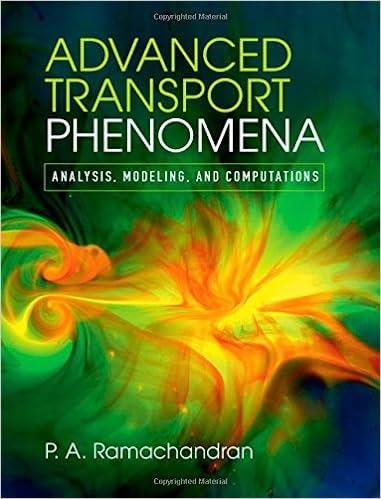Consider again the problem of flow past a cylinder with rotation considered in Example 15.4. Calculate and
Question:
Consider again the problem of flow past a cylinder with rotation considered in Example 15.4. Calculate and plot the location of the stagnation point on the cylinder surface for \(0)\). Plot typical streamlines.
Also calculate the locations for larger values of \(\kappa^{*}\). These are now along the \(\theta=-\pi / 2\) line but not on the surface of the cylinder.
![]()
Example 15.4:
The potential for flow past a cylinder. It can be seen that this is a superposition of a dipole placed at the origin and a uniform flow in the x-direction.We now extend this for a rotating cylinder. We show that a lift force (a force in the vertical direction) is associated with this system. We simply add the potential corresponding to a point vortex placed at the origin. The combined potential satisfying all these three combinations can be expressed as

where κ is the circulation around the cylinder, which is defined as

since the tangential velocity is equal to vθ = R.
The tangential velocity at the surface is
![]()
The pressure profiles are then computed from the Bernoulli equation. There is a net lift force in the system, and this can be computed by integrating the upward component of the pressure force along the perimeter:
![]()
The lift force is proportional to the approach velocity and the circulation around the object. It turns out that this is a general result for bodies of arbitrary shape in 2D flows, where the lift turns out to be related to the circulation. The lift force is downward when the rotation is counterclockwise and upward when the rotation is clockwise. (The fluid is assumed to flow in the usual x-direction, i.e., from left to right.)
Step by Step Answer:

Advanced Transport Phenomena Analysis Modeling And Computations
ISBN: 9780521762618
1st Edition
Authors: P. A. Ramachandran




